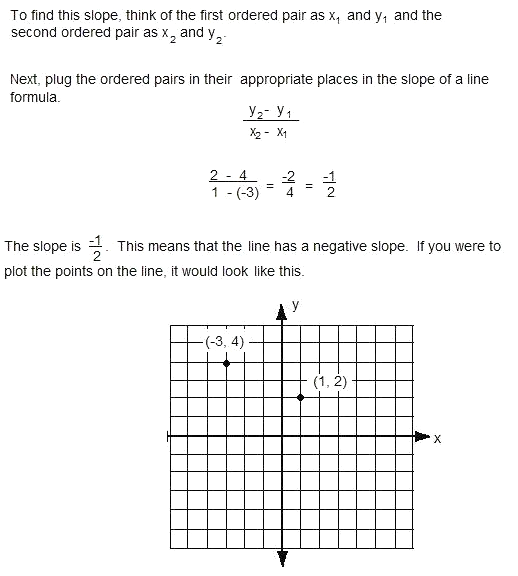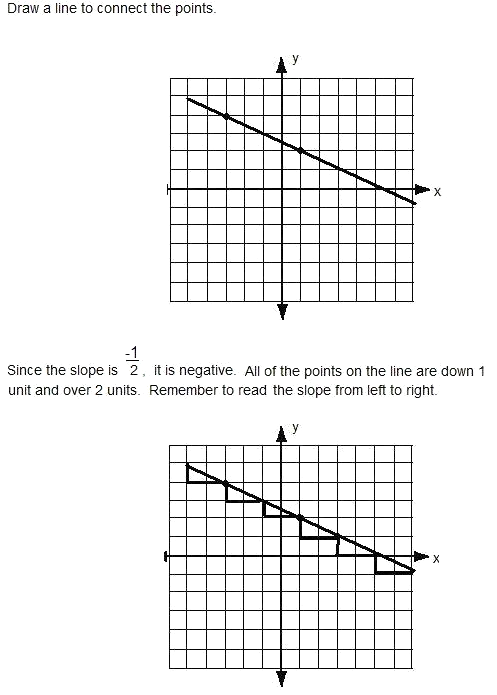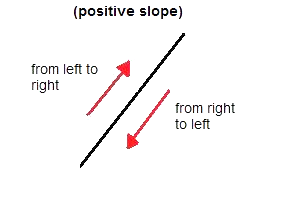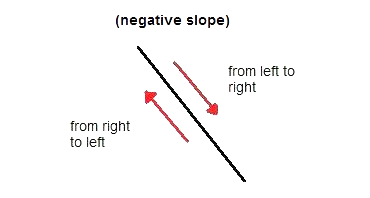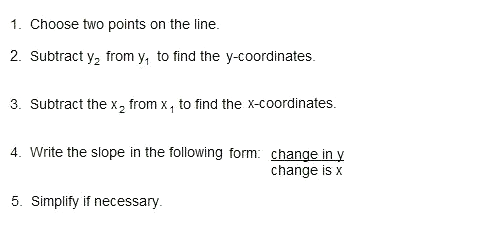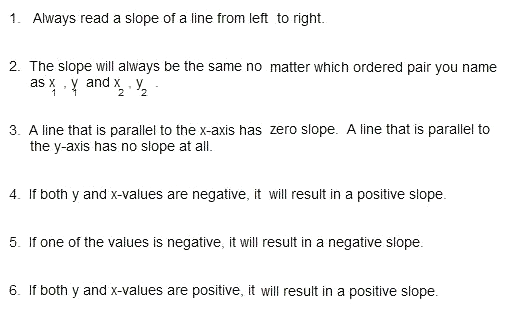Some Helpful Tools
This section will cover the fundamentals and rules of the slope of a line.
In Example 2, the slope above is negative slope because it is going downward from
left to right.
The degree of steepness of the slope is determined by the actual change in
y-values to the change in the x-values from point to point.
The formula for a slope of a line is:
Positive and Negative Slope
The Slope of a Line Formula
Steps to Follow
Finding the Slope of a LIne
Example: Find the slope of the line that contains the points (-3, 4) and (1, 2).
In this case, start with the y-value because it tells how many units to go down just like the y-axis goes up and down. The x-coordinate tells how many units to go across just like the x-axis goes across.
When the slope goes downward, begin counting downward the number of units for the y-value. Then count the units across for the x-value.
When the slope goes upward, begin counting upward the number of units for the y-value. Then count the units across for the x-value.
A slope of a line can go in two different directions.
- A line with a slope that goes upward from left to right is called a positive slope.
- A line with a slope that goes downward from left to right is called a negative slope.
If the slope is read from right to left, it will be the opposite of what it was intended.
Example 1:
In Example 1, the slope is positive because it is going upward from left to right. However, from right to left, it is going downward.
Example 2:
Things to Remember
Math: Slope of a Line - Tutorial

